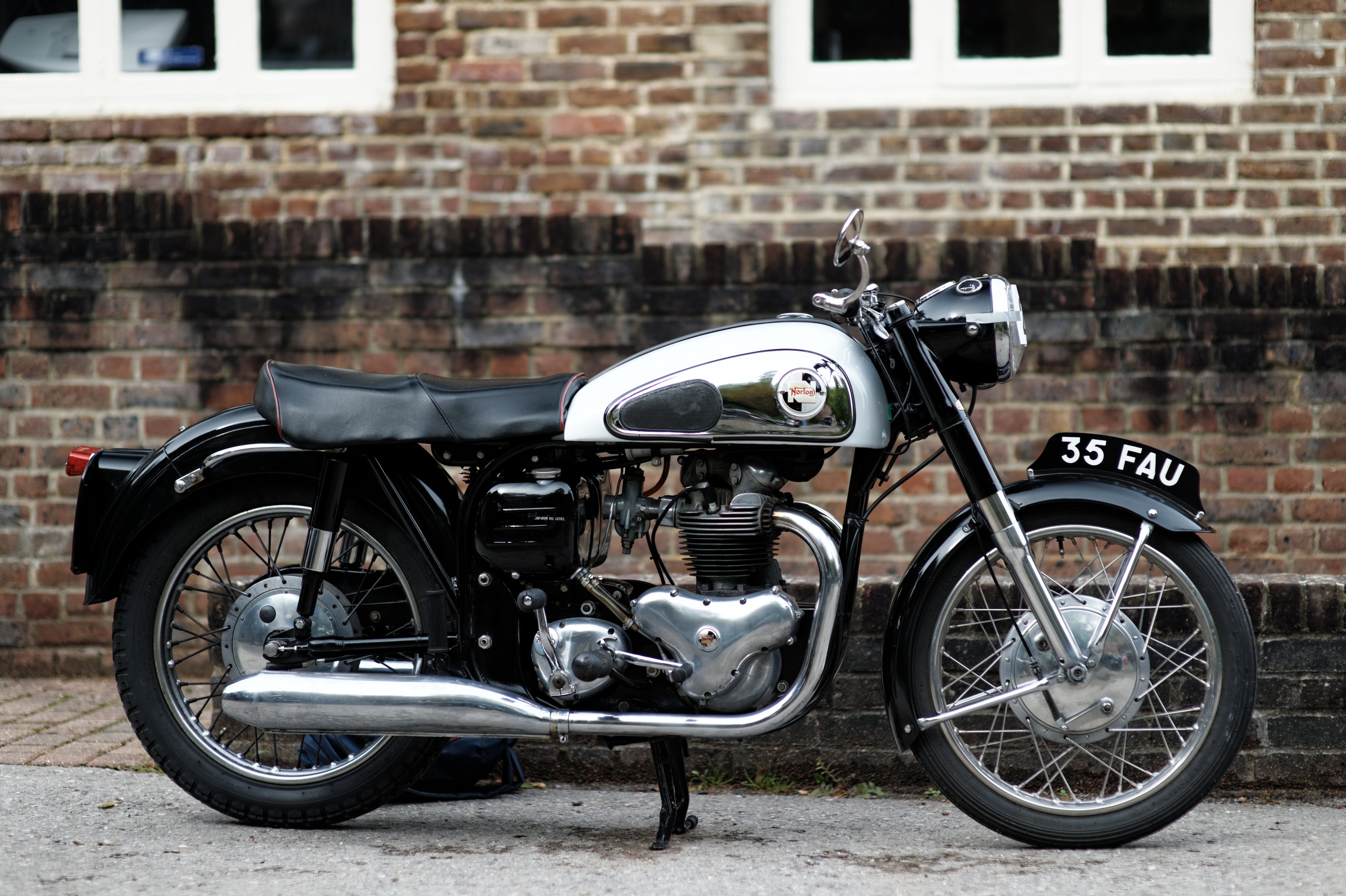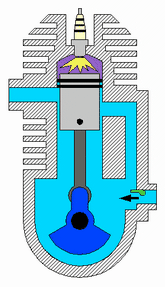|
Cagiva Roadster
The Roadster 521 is a 125cc motorcycle made by the Italian motorcycle firm, Cagiva in the 1990s. One of the fastest accelerating 125cc motorcycles of its time, the Roadster 521 is known to have a top speed of 80 mph restricted and an estimated 100 mph+ un-restricted. Achieving approximately 70 miles per gallon, it is relatively economical for a 2-stroke A two-stroke (or two-stroke cycle) engine is a type of internal combustion engine that completes a power cycle with two strokes of the piston, one up and one down, in one revolution of the crankshaft in contrast to a four-stroke engine which ... motorcycle. In 2000, production of the Cagiva Roadster ended. In 2008, Harley-Davidson bought MV Agusta Motor, the parent company of Cagiva, thereby regaining some control of its old Aermacchi factory. Specification Make Model Cagiva Roadster 521 Number produced 329 between 1993 and 1999 Year 1993 Engine Air cooled, Single cylinder, two stroke Capacity 125 Bore x ... [...More Info...] [...Related Items...] OR: [Wikipedia] [Google] [Baidu] |
Motorcycle
A motorcycle (motorbike, bike; uni (if one-wheeled); trike (if three-wheeled); quad (if four-wheeled)) is a lightweight private 1-to-2 passenger personal motor vehicle Steering, steered by a Motorcycle handlebar, handlebar from a saddle-style seat. Motorcycle designs vary greatly to suit a range of different purposes: Long-distance motorcycle riding, long-distance travel, Motorcycle commuting, commuting, cruising (driving), cruising, Motorcycle sport, sport (including Motorcycle racing, racing), and Off-roading, off-road riding. Motorcycling is riding a motorcycle and being involved in other related social activities such as joining a motorcycle club and attending motorcycle rally, motorcycle rallies. The 1885 Daimler Reitwagen made by Gottlieb Daimler and Wilhelm Maybach in Germany was the first internal combustion, petroleum-fueled motorcycle. In 1894, Hildebrand & Wolfmüller became the first series production motorcycle. Globally, motorcycles are comparable numerically t ... [...More Info...] [...Related Items...] OR: [Wikipedia] [Google] [Baidu] |
Cagiva
Cagiva is an Italian motorcycle manufacturer. It was founded in 1950 by Giovanni Castiglioni in Varese, originally producing small metal components. Giovanni's sons, Claudio and Gianfranco Castiglioni, went into the motorcycle industry in 1978. The name is a portmanteau derived from the founder's name 'Giovanni Castiglioni' and the founding location, i.e. Castiglioni Giovanni Varese. In its history, Cagiva won races in Dakar Rally, Dakar and Motocross competitions, as well as in Grand Prix motorcycle racing. History In 1978, Cagiva entered the motorcycle business with two racing motorcycles ridden by Gianfranco Bonera and Marco Lucchinelli. In the same year it bought a factory in Varese's frazione of Schiranna from Harley-Davidson, Aermacchi/AMF-Harley-Davidson and went into motorcycle production. By 1979 the company reached an annual production of 40,000 motorbikes, with eight models powered by two-stroke engines ranging from 125 cc to 350 cc. Many of the Harley-Da ... [...More Info...] [...Related Items...] OR: [Wikipedia] [Google] [Baidu] |
2-stroke
A two-stroke (or two-stroke cycle) engine is a type of internal combustion engine that completes a power cycle with two strokes of the piston, one up and one down, in one revolution of the crankshaft in contrast to a four-stroke engine which requires four strokes of the piston in two crankshaft revolutions to complete a power cycle. During the stroke from bottom dead center to top dead center, the end of the exhaust/intake (or scavenging) is completed along with the compression of the mixture. The second stroke encompasses the combustion of the mixture, the expansion of the burnt mixture and, near bottom dead center, the beginning of the scavenging flows. Two-stroke engines often have a higher power-to-weight ratio than a four-stroke engine, since their power stroke occurs twice as often. Two-stroke engines can also have fewer moving parts, and thus be cheaper to manufacture and weigh less. In countries and regions with stringent emissions regulation, two-stroke engines ha ... [...More Info...] [...Related Items...] OR: [Wikipedia] [Google] [Baidu] |
Cagiva Motorcycles
Cagiva is an Italian motorcycle manufacturer. It was founded in 1950 by Giovanni Castiglioni in Varese, originally producing small metal components. Giovanni's sons, Claudio and Gianfranco Castiglioni, went into the motorcycle industry in 1978. The name is a portmanteau derived from the founder's name 'Giovanni Castiglioni' and the founding location, i.e. Castiglioni Giovanni Varese. In its history, Cagiva won races in Dakar and Motocross competitions, as well as in Grand Prix motorcycle racing. History In 1978, Cagiva entered the motorcycle business with two racing motorcycles ridden by Gianfranco Bonera and Marco Lucchinelli. In the same year it bought a factory in Varese's frazione of Schiranna from Aermacchi/AMF-Harley-Davidson and went into motorcycle production. By 1979 the company reached an annual production of 40,000 motorbikes, with eight models powered by two-stroke engines ranging from 125 cc to 350 cc. Many of the Harley-Davidson models were contin ... [...More Info...] [...Related Items...] OR: [Wikipedia] [Google] [Baidu] |
Two-stroke Motorcycles
A two-stroke (or two-stroke cycle) engine is a type of internal combustion engine that completes a power cycle with two strokes of the piston, one up and one down, in one revolution of the crankshaft in contrast to a four-stroke engine which requires four strokes of the piston in two crankshaft revolutions to complete a power cycle. During the stroke from bottom dead center to top dead center, the end of the exhaust/intake (or scavenging) is completed along with the compression of the mixture. The second stroke encompasses the combustion of the mixture, the expansion of the burnt mixture and, near bottom dead center, the beginning of the scavenging flows. Two-stroke engines often have a higher power-to-weight ratio than a four-stroke engine, since their power stroke occurs twice as often. Two-stroke engines can also have fewer moving parts, and thus be cheaper to manufacture and weigh less. In countries and regions with stringent emissions regulation, two-stroke engines have ... [...More Info...] [...Related Items...] OR: [Wikipedia] [Google] [Baidu] |
Single-cylinder Motorcycles
A single-cylinder engine, sometimes called a thumper, is a piston engine with one cylinder. This engine is often used for motorcycles, motor scooters, motorized bicycles, go-karts, all-terrain vehicles, radio-controlled vehicles, power tools and garden machinery (such as chainsaws, lawn mowers, cultivators, and string trimmers). Single-cylinder engines are made both as 4-strokes and 2-strokes. Characteristics Compared with multi-cylinder engines, single-cylinder engines are usually simpler and compact. Due to the greater potential for airflow around all sides of the cylinder, air cooling is often more effective for single cylinder engines than multi-cylinder engines. This reduces the weight and complexity of air-cooled single-cylinder engines, compared with liquid-cooled engines. Drawbacks of single-cylinder engines include a more pulsating power delivery through each cycle and higher levels of vibration. The uneven power delivery means that often a single-cylinder en ... [...More Info...] [...Related Items...] OR: [Wikipedia] [Google] [Baidu] |



